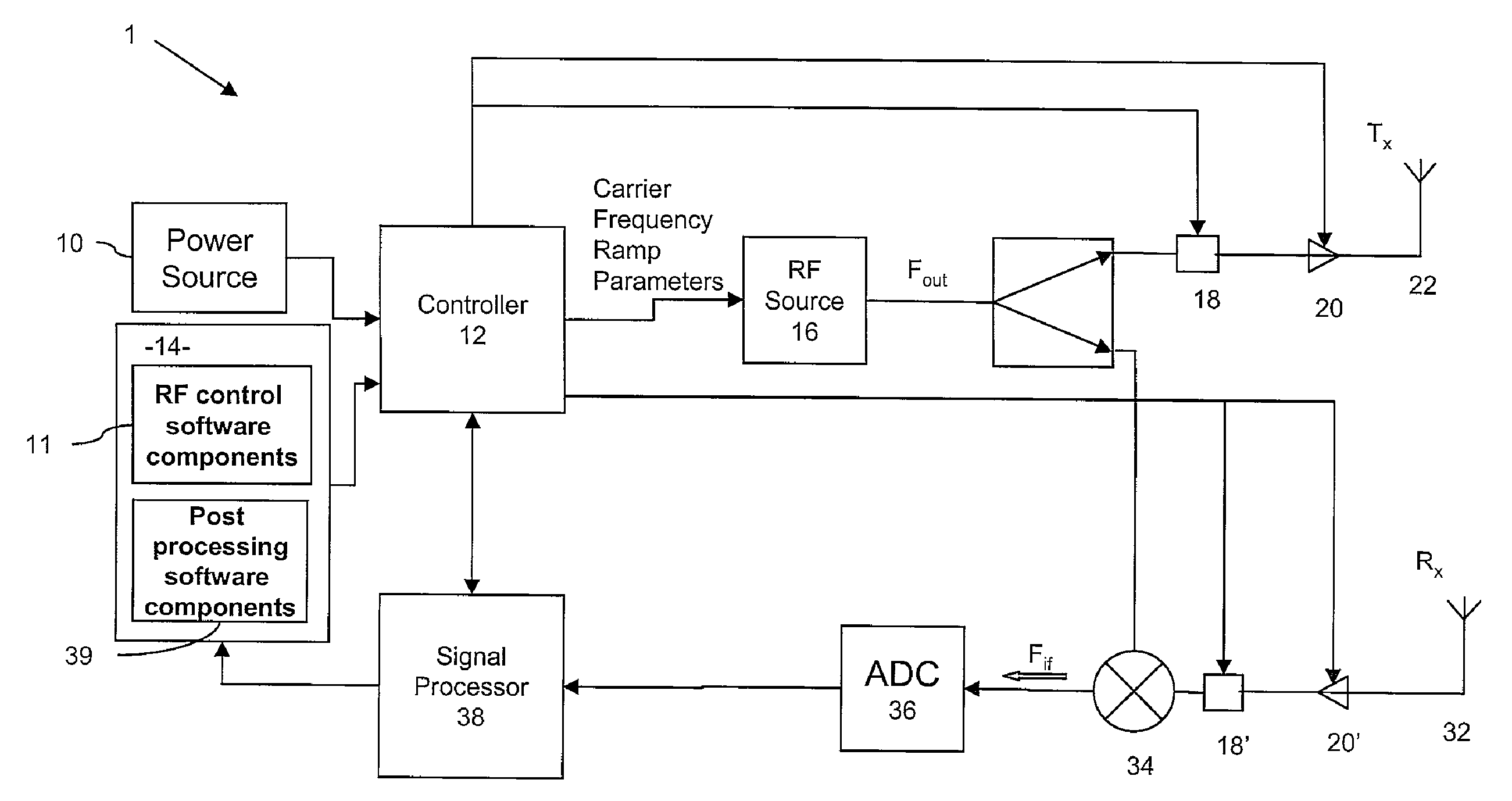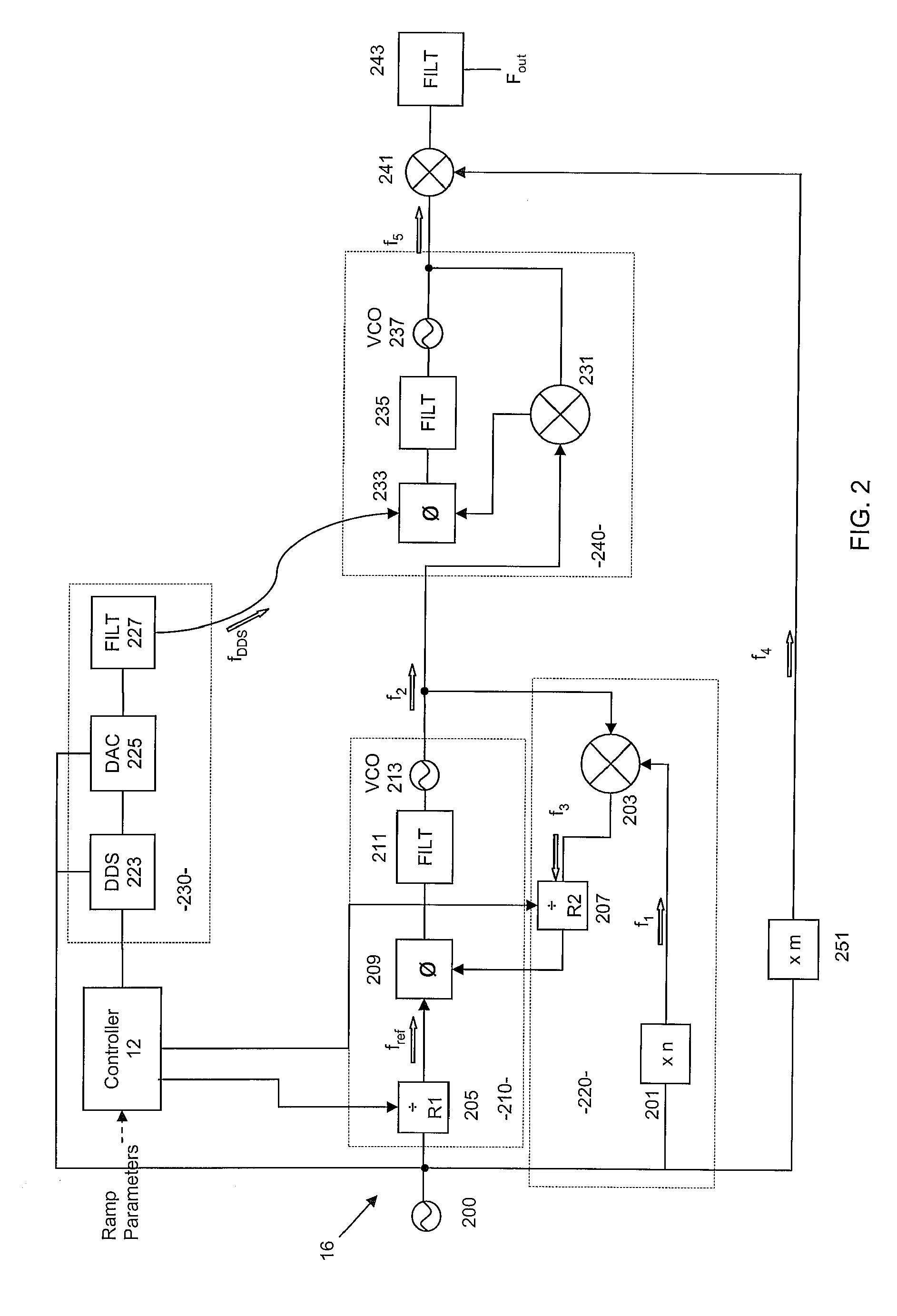Radar system
a radar and radar technology, applied in the field of radar systems, can solve the problems of requiring a large power source, requiring a large inventory of parts, and relying on physical components for their operation, so as to reduce the amount of phase noise, less phase noise, and the effect of reducing the number of times of multiplication
- Summary
- Abstract
- Description
- Claims
- Application Information
AI Technical Summary
Benefits of technology
Problems solved by technology
Method used
Image
Examples
Embodiment Construction
[0060]FIG. 1 shows a radar system 1 according to embodiments of the invention, comprising a power source 10, a controller 12, and a computer 14, the power source and computer 10, 14 being arranged to provide power to, and operational control over, the controller 12. The controller 12 comprises a microprocessor and a set of instructions (not shown) for execution thereby, effectively generating control signals that cause the RF frequency source, or signal generator 16, to output RF energy at a specified frequency FOUT, and this output signal, under control of switches 18 and amplifiers 20, drives antenna 22 (whilst the Figure shows a switch component 18, it will be appreciated that in this particular arrangement—in which there is only one antenna 22—the switch 18 is inessential). As will be described in more detail below, the RF frequency source 16 generates signals within a range of frequencies, causing the antenna 22 to transmit beams in different angular directions, thereby scannin...
PUM
 Login to View More
Login to View More Abstract
Description
Claims
Application Information
 Login to View More
Login to View More - R&D
- Intellectual Property
- Life Sciences
- Materials
- Tech Scout
- Unparalleled Data Quality
- Higher Quality Content
- 60% Fewer Hallucinations
Browse by: Latest US Patents, China's latest patents, Technical Efficacy Thesaurus, Application Domain, Technology Topic, Popular Technical Reports.
© 2025 PatSnap. All rights reserved.Legal|Privacy policy|Modern Slavery Act Transparency Statement|Sitemap|About US| Contact US: help@patsnap.com



